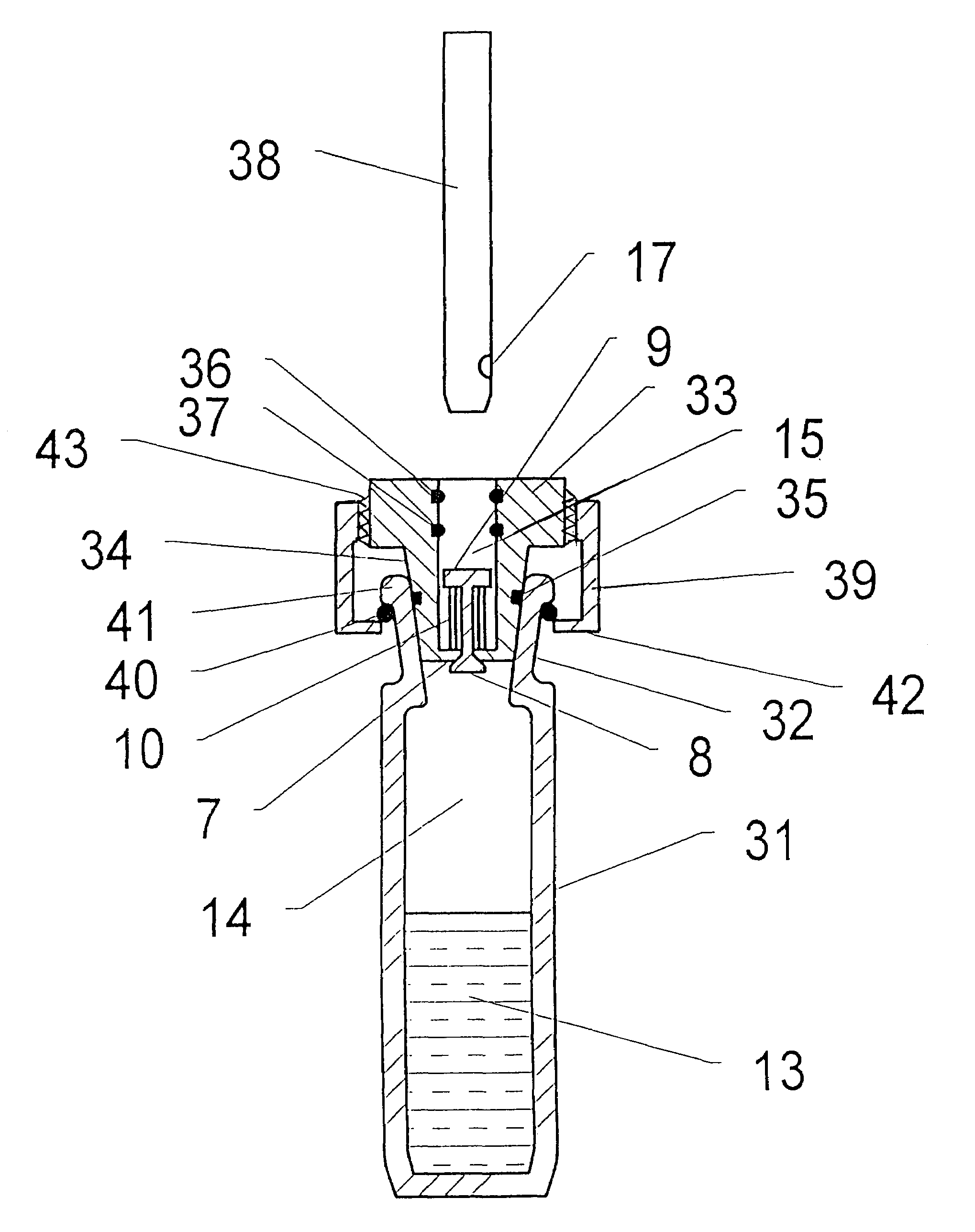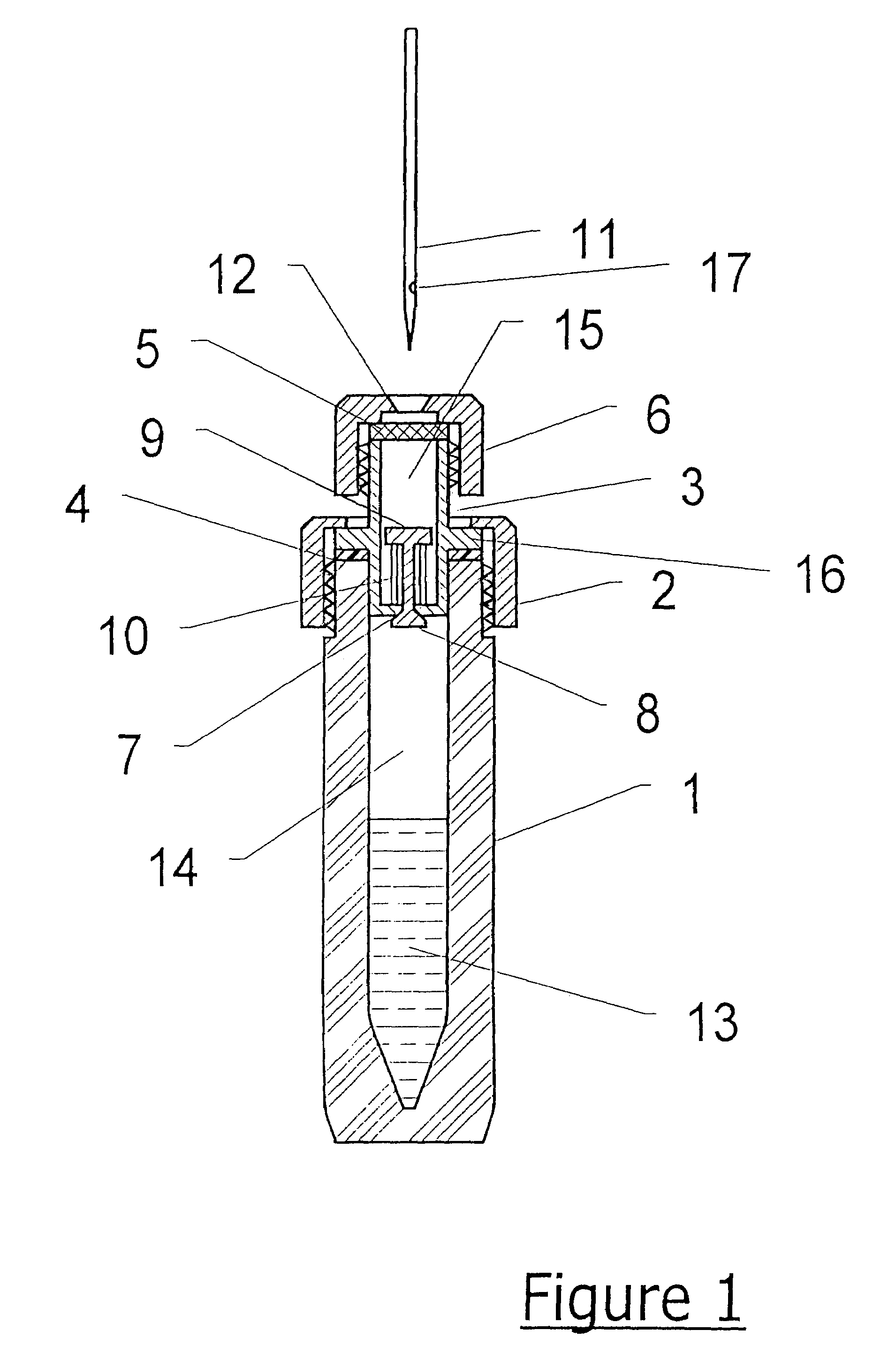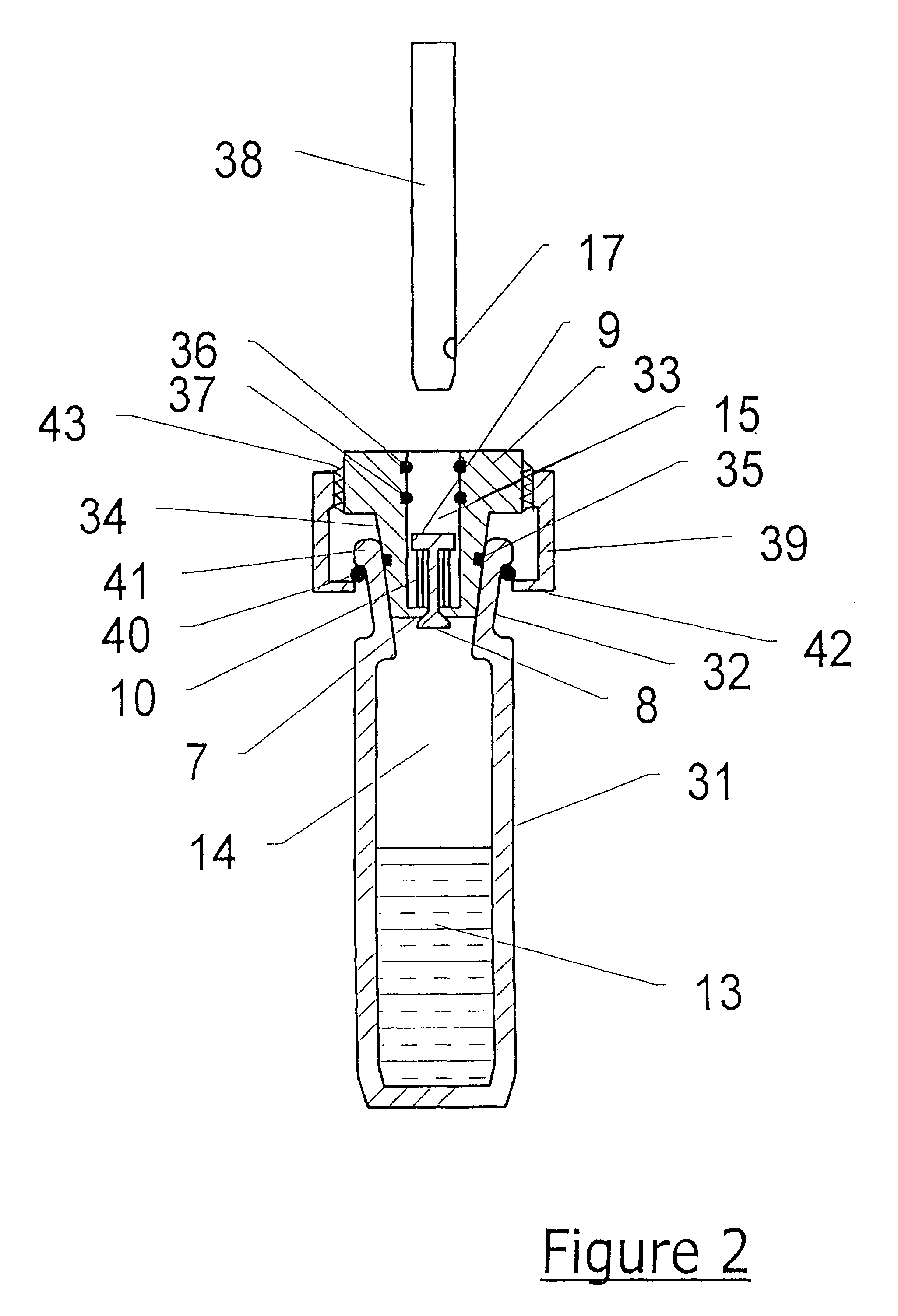Sample vial and vial closure device for use in gas analysis
a technology for gas analysis and sample vials, which is applied in the direction of closure lids, closure stoppers, and withdrawal sample devices, etc., can solve the problems of limited life of lined septa of this type, inability to provide an adequate seal around the needle, and inability to automate the process
- Summary
- Abstract
- Description
- Claims
- Application Information
AI Technical Summary
Benefits of technology
Problems solved by technology
Method used
Image
Examples
Embodiment Construction
[0050]Referring first to FIG. 1, a conventional glass vial 1 has a screw cap or retaining ring 2 which engages with a thread on the exterior of the vial. A hollow body member 3, conveniently made from stainless steel, has a flange 16 on its exterior and is located in the mouth of the vial 1 as shown. First sealing means comprising a rubber or PTFE washer 4 is disposed between the flange 16 and the top of the vial 1, and seals the exterior of the hollow body member 3 to the vial 1 by the pressure exerted on it by the screw cap 2 when it is tightened on the vial.
[0051]Second sealing means 5 comprise a silicone rubber septum which is disposed at the top of the hollow body member 3 as shown. It is secured by means of a screw cap 6 which engages with a thread cut on the exterior of the hollow body member 3. The cap 6 comprises a hole 12 through which a gas sampling means 11 (comprising a hollow syringe needle) may be introduced into the interior 15 of the hollow body member 3 by piercing...
PUM
 Login to View More
Login to View More Abstract
Description
Claims
Application Information
 Login to View More
Login to View More - R&D
- Intellectual Property
- Life Sciences
- Materials
- Tech Scout
- Unparalleled Data Quality
- Higher Quality Content
- 60% Fewer Hallucinations
Browse by: Latest US Patents, China's latest patents, Technical Efficacy Thesaurus, Application Domain, Technology Topic, Popular Technical Reports.
© 2025 PatSnap. All rights reserved.Legal|Privacy policy|Modern Slavery Act Transparency Statement|Sitemap|About US| Contact US: help@patsnap.com



